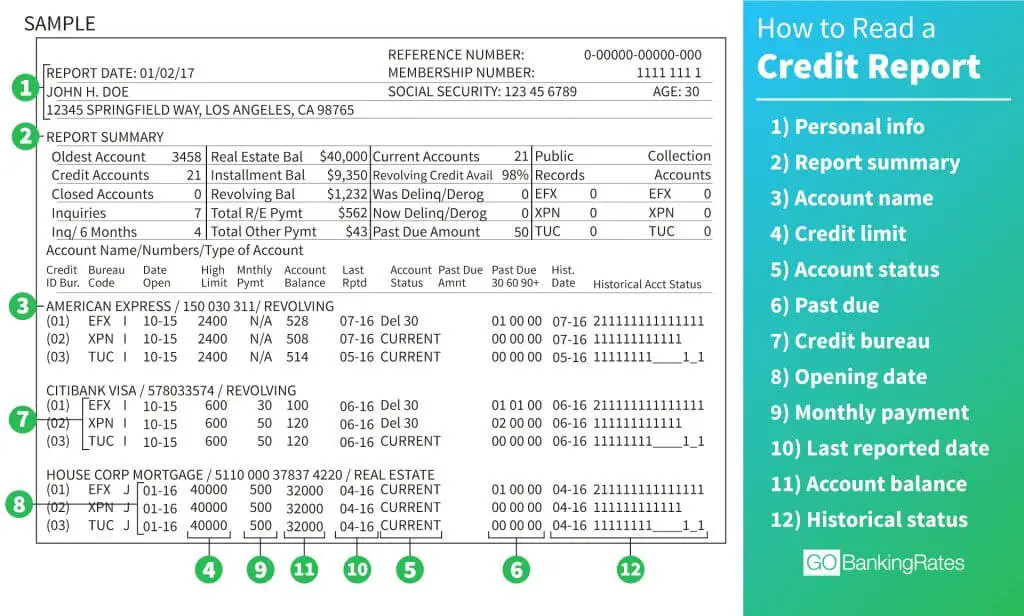Looking to reduce your monthly grocery bills? You’ve come to the right place! We all know that grocery expenses can add up quickly, but with a few smart strategies, you can easily cut costs without compromising on the quality of your meals. In this article, we’ll share practical tips and tricks on how to slash those grocery bills and save more money. So, if you’re ready to learn how to cut costs on monthly grocery bills, keep reading!
How to Cut Costs on Monthly Grocery Bills
With rising prices and the ever-increasing cost of living, finding ways to save money on your monthly grocery bills is becoming more important than ever. The good news is that there are several strategies you can employ to trim your grocery expenses without sacrificing quality or nutrition. In this article, we will explore various tips and techniques that will help you stretch your dollar and reduce your monthly grocery bill.
1. Plan your meals and create a shopping list
One of the key ways to cut costs on your monthly grocery bills is to plan your meals in advance and create a shopping list. By knowing exactly what you need to buy and sticking to your list, you can avoid impulse purchases and unnecessary items. Here’s how you can do it:
- Take inventory of your pantry and refrigerator: Before you head to the grocery store, check what you already have. This will help you avoid buying duplicates and make use of what you already have.
- Create a weekly meal plan: Plan your meals for the week, including breakfast, lunch, dinner, and snacks. This will give you a clear idea of what ingredients you need to buy.
- Make a shopping list: Write down all the items you need for your planned meals. Organize the list by sections, such as produce, dairy, meat, and pantry staples, to make your shopping more efficient.
By planning your meals and creating a shopping list, you can avoid buying unnecessary items and stay focused on what you really need.
2. Shop with a budget in mind
Setting a budget for your grocery shopping is crucial to cutting costs. Here’s how you can shop with a budget in mind:
- Set a realistic budget: Assess your monthly income and expenses and determine how much you can afford to spend on groceries. Allocate a specific amount for groceries and stick to it.
- Track your spending: Keep track of your grocery expenses to ensure you stay within your budget. Use a mobile app or a simple notebook to record your purchases.
- Look for discounts and deals: Keep an eye out for sales, promotions, and coupons. Take advantage of loyalty programs offered by grocery stores to save even more.
Shopping with a budget in mind will help you prioritize your purchases and avoid overspending.
3. Buy in bulk
Buying in bulk can significantly reduce your grocery expenses over time. While it may require a larger upfront investment, it can lead to substantial savings in the long run. Here are some benefits of buying in bulk:
- Lower cost per unit: Bulk items often have a lower cost per unit compared to smaller packages. This means you get more for your money.
- Reduced packaging waste: Buying in bulk reduces the amount of packaging waste, which is not only environmentally friendly but can also lead to savings.
- Stock up on essentials: By buying in bulk, you can stock up on essentials like rice, pasta, canned goods, and toiletries, ensuring you never run out.
Before buying in bulk, make sure you have enough storage space and that the items you’re purchasing are non-perishable or have a long shelf life.
4. Shop with seasonal produce
Buying produce that is in season can help you save money on your grocery bills. Seasonal fruits and vegetables are often priced lower due to their abundance and reduced transportation costs. Here are some benefits of shopping with seasonal produce:
- Fresher and tastier produce: Seasonal produce is typically fresher and tastier since it is harvested at its peak.
- Lower prices: Due to the abundance of seasonal produce, prices tend to be lower compared to out-of-season items.
- Support local farmers: Buying seasonal produce supports local farmers and the agricultural community.
Check your local farmer’s market or grocery store for seasonal produce options. Incorporating seasonal fruits and vegetables into your meals can add variety and save you money.
5. Cook and prepare meals at home
Eating out or ordering takeout can quickly add up and significantly impact your monthly grocery budget. Cooking and preparing meals at home is not only more cost-effective but also allows you to control the ingredients and portion sizes. Here’s how you can save money by cooking at home:
- Meal prep: Set aside some time each week to plan and prepare meals in advance. This can help you save time and prevent last-minute takeout orders.
- Utilize leftovers: Instead of throwing away leftovers, repurpose them into new meals or use them for lunches the following day. This minimizes food waste and saves you money.
- Try DIY versions: Instead of buying pre-packaged or processed foods, try making your own versions at home. You’ll often find that homemade options are not only cheaper but also healthier.
Cooking and preparing meals at home can be a fun and rewarding experience while saving you money in the process.
6. Compare prices and shop at different stores
Don’t limit yourself to a single grocery store. Comparing prices and shopping at different stores can help you find the best deals and save money. Here’s what you can do:
- Research prices online: Use websites or mobile apps to compare prices of items across different grocery stores in your area.
- Visit local farmer’s markets: Farmer’s markets often offer fresh and affordable produce. Support local farmers while enjoying competitive prices.
- Consider discount stores: Discount stores or warehouse clubs can offer significant savings on bulk items and pantry staples.
By exploring different stores and comparing prices, you can make informed decisions and save money on your grocery purchases.
7. Reduce food waste
Reducing food waste is not only beneficial for the environment but can also help you cut down on your monthly grocery bills. Here are some tips to minimize food waste:
- Plan your meals and portion sizes: By planning your meals and portioning your ingredients, you can avoid overbuying and wasting food.
- Use leftovers creatively: Repurpose leftovers into new meals or freeze them for later use. This ensures that no food goes to waste.
- Properly store perishable items: Learn how to store fruits, vegetables, and other perishable items correctly to extend their shelf life and prevent spoilage.
Reducing food waste not only saves you money but also helps create a more sustainable food system.
8. Consider generic brands and alternative options
Opting for generic or store-brand products instead of name brands can lead to significant savings. Many generic brands offer comparable quality to their more expensive counterparts at a lower price. Additionally, considering alternative options can help you save money. Here are some ideas:
- Compare ingredients: Check the ingredients and nutritional information of generic and name brand products. You might find that they are similar, allowing you to opt for the more cost-effective option.
- Explore different protein sources: Meat and poultry can be expensive. Consider incorporating more affordable protein sources like legumes, tofu, or eggs into your meals.
- Buy in-season frozen produce: If fresh produce is expensive or not readily available, consider buying frozen fruits and vegetables. They are often more affordable and can be just as nutritious.
By considering generic brands and alternative options, you can save money without compromising on quality or taste.
9. Use technology to your advantage
Take advantage of technology to help you save money on your grocery bills:
- Grocery apps and websites: Use grocery apps and websites to find deals, coupons, and discounts. Some apps even allow you to compare prices and create shopping lists.
- Digital coupons: Many grocery stores offer digital coupons that you can load onto your loyalty card or smartphone. Redeem these coupons at the checkout to save money.
- Cashback apps: Explore cashback apps that offer rebates on grocery purchases. Simply scan your receipt or link your loyalty card to earn cashback on eligible items.
By harnessing the power of technology, you can uncover additional savings and make your grocery shopping more efficient.
10. Grow your own food
For those with a green thumb, growing your own food can be a rewarding way to save money on groceries. Even if you have limited space, you can grow herbs, lettuce, or tomatoes in pots or small containers. Here’s how you can get started:
- Assess your space: Determine how much space you have available and choose plants that are suitable for your environment.
- Start small: Begin with a few easy-to-grow herbs or vegetables. As you gain experience, you can expand your garden.
- Learn basic gardening techniques: Research watering, fertilizing, and pest control techniques specific to the plants you’re growing.
Growing your own food not only saves you money but also provides you with fresh produce right at your doorstep.
By implementing these strategies and making conscious choices, you can cut costs on your monthly grocery bills while still enjoying delicious and nutritious meals. Remember, every little saving adds up, so start applying these tips today and watch your grocery budget shrink!
How to cut grocery costs with these simple tips! Save your grocery budget!
Frequently Asked Questions
Frequently Asked Questions (FAQs)
1. How can I save money on my monthly grocery bills?
Cutting costs on monthly grocery bills is possible through simple strategies such as:
2. What are some effective ways to reduce grocery expenses?
Here are a few tips to help you reduce your grocery expenses:
3. How can meal planning contribute to reducing grocery costs?
Meal planning is an excellent way to cut down on grocery costs because it allows you to:
4. Are generic or store brands a good option to save money on groceries?
Opting for generic or store brand products can save you money on groceries without compromising quality. Here’s why:
5. Can couponing really help me save money on groceries?
Yes, couponing can be an effective method to save money on groceries. Consider these tips to make the most of coupons:
6. Is buying in bulk a good way to cut costs on groceries?
Buying in bulk can be a cost-effective strategy for reducing grocery expenses. Here’s how:
7. Can shopping at local farmer’s markets help me save money on groceries?
Shopping at local farmer’s markets can offer various benefits, including potential savings on groceries. Here’s how it can help:
8. How can I avoid impulse purchases to save money on groceries?
Impulse purchases often increase grocery bills. Implement these strategies to avoid unnecessary expenses:
These are just some of the ways you can cut costs on your monthly grocery bills. By being mindful of your spending and implementing smart strategies, you can save money without compromising on the quality of your meals.
Final Thoughts
To cut costs on monthly grocery bills, start by creating a budget and sticking to it. Plan your meals in advance and make a shopping list based on your needs, avoiding impulse buys. Compare prices at different stores and take advantage of sales and discounts. Consider buying generic brands or in bulk to save money. Additionally, avoid wasting food by properly storing leftovers and using them in future meals. By following these tips, you can significantly reduce your grocery expenses and achieve financial savings without compromising on quality or nutrition.



